Thoughts from the USAU Board candidates
December 15, 2020 by Guest Author in Opinion with 0 comments
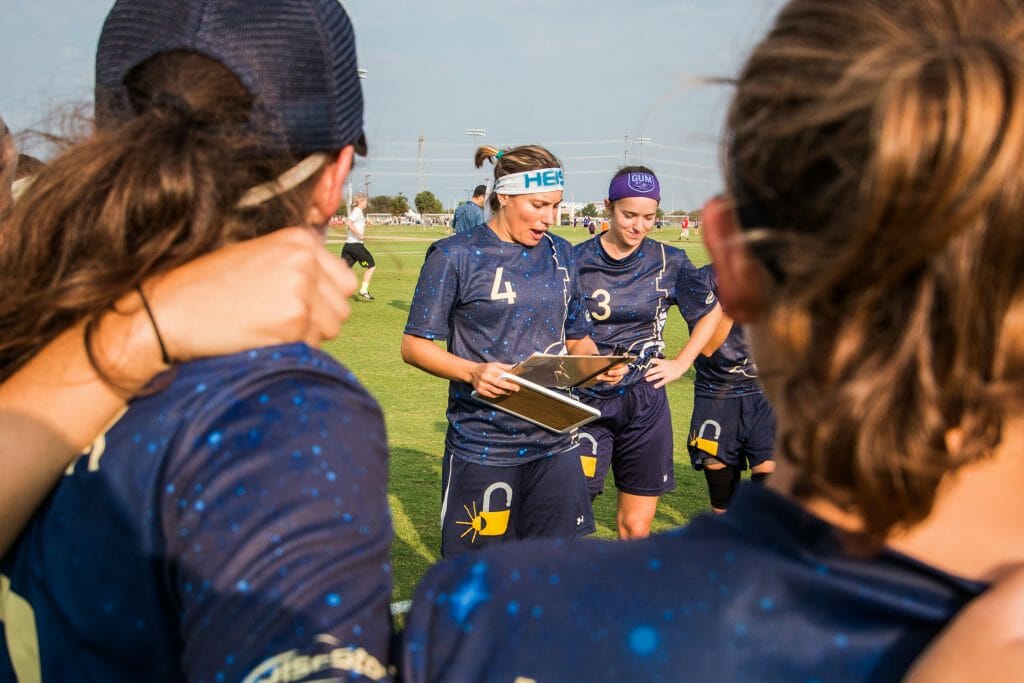
This article was written by Robyn Fennig, the USAU Board President and lone candidate for the Elite Athlete position on the USA Ultimate Board of Directors that is up for election through December 23rd. All seven board candidates have been offered an opportunity to write an essay and appear on a special edition of the Deep Look podcast this week. USAU members can vote in the election through their online account.
I’m your lone candidate for the “Elite Athlete” seat for the USA Ultimate Board of Directors. Since I’m running unopposed as an elite athlete, I’m taking a different approach in my piece. I’m simply asking you this:
What is the role of the USA Ultimate Board of Directors and who do you want on it?
In order to help us think about the above related questions, I’m going to use a metaphor.1

Let’s pretend that the mission of USA Ultimate is to help its members climb Mount Sportsland. There is a Board to oversee this mission. The Board is tasked with creating The Handbook to guide folks up the mountain. This isn’t just your average trail map. The Handbook contains all sorts of plans to teach people how to get up the mountain, outline how the group will do outreach to get members to join the expedition, address the challenges posed by climate, flora, fauna, group dynamics, and distribution of resources to the expedition party, among many topics. The handbook simultaneously provides crucial information for the leaders actually on the mountain, like a snapshot of the members and how to lead them. The last thing the Board does is hire The Guide to ultimately lead the party up Mount Sportsland. The lead mountaineering guide also gets to hire some additional staff and ask for volunteers to help get folks up the mountain.
Now, the important aspect? In my opinion, it’s not the guide. I think that it’s the handbook that is the most important part of the process. Through creating the handbook, the whole group better understands their identity and goals – not everyone wants to go to the top, not everyone wants to go as fast as humanly possible. Some folks are interested in the scenery, the animals, the water features. Without the handbook, the journey is an experiment, folks are ill prepared, and there is no general direction to go in.
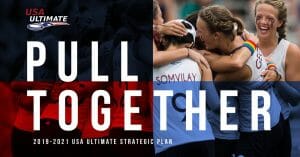
In this metaphor, the handbook is the USAU Strategic Plan. Our organization has gone through several iterations of strategic plans, starting in 2007. Even though each plan seems to have its unique flavors and focus areas, some key folks keep saying that 2007 was the pinnacle of our organization.2 Why do we keep “chasing the 2007 strategic plan” as the one to replicate? Who wants to replicate it? And who does the plan leave behind?
I started playing ultimate in January 2006 and immediately dove head first into the community, like many new players do. I wanted to learn everything!3
I spent hours looking online for things to learn and literally borrowed all the UPA newsletters and magazines from my college captains.4 I was obsessed with ultimate in 2006 and yet I didn’t hear about the strategic planning process. Not in 2007. Not even in 2008, when I finally hit the “upper echelons of club competition!” and made it to Club Nationals, playing in semifinals with a combination Drag’N Thrust/CLX team. Guys, I made it to the top, and I still had no idea that this strategic planning process existed or that community members were participating in it!
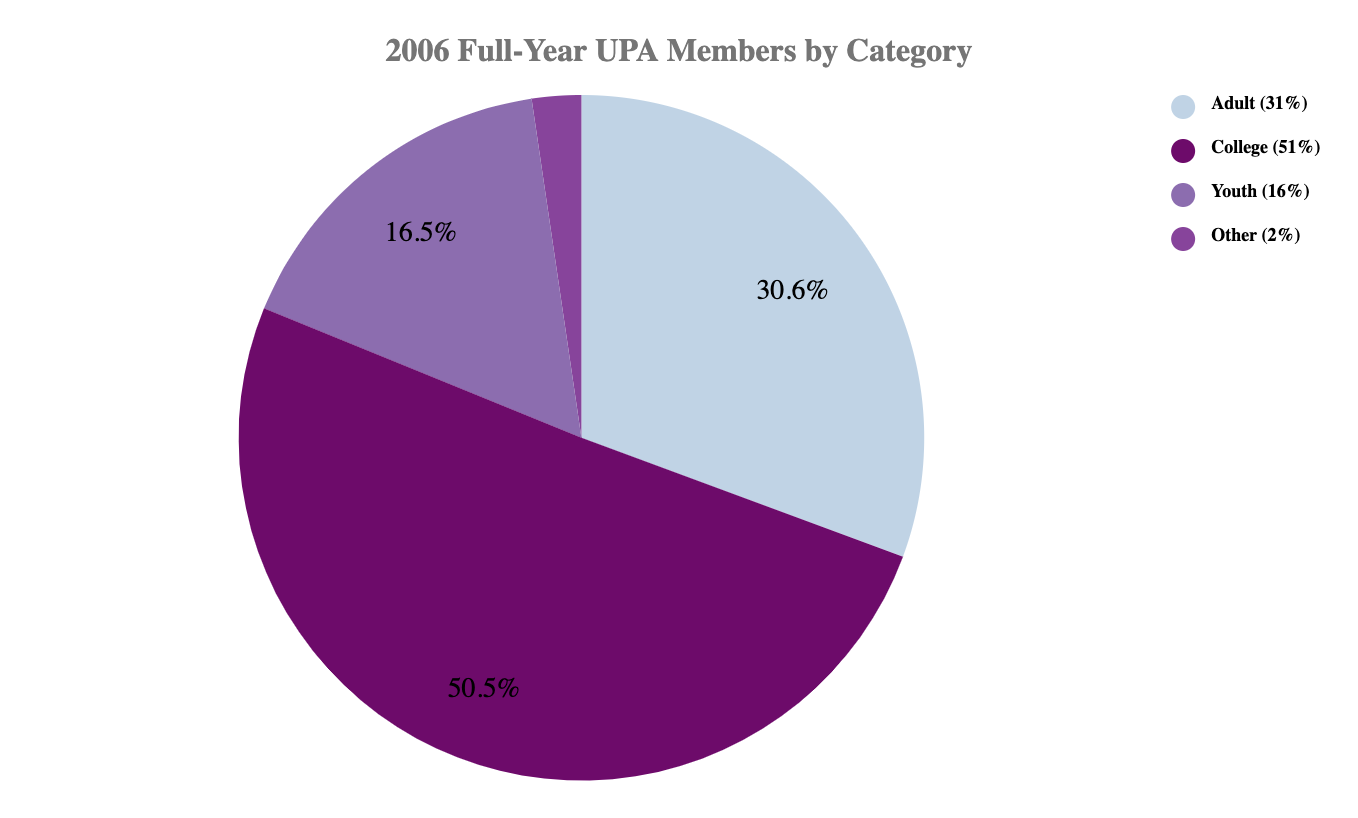
In 2006, when the strategic planning process was going on, I was part of the biggest demographic in USA Ultimate membership: non-elite college players. In fact, 50% of the full-time membership at the time was comprised of college players, and maybe 5% of us were “nationals caliber.”5 I genuinely cannot say whose voices were heard in the 2007 strategic planning process, because I was not invited to the table. I can understand that public outreach was harder in 2007 in a landscape where everyone in the college demographic was obsessed with Facebook, and it was a requirement to have an email address ending in .edu to share things with only people one was friends with.6 So maybe it was a barrier to do outreach to its largest demographic of us who were just trying to make it to college Regionals.
The reason I bring this up is that even assuming the “best” — that all 32 teams who made it to College Nationals were included in the process, their rosters had 20 players each, so 640 players received direct outreach at Nationals about strategic planning and all of them actually participated — 2.6% of our overall membership and 5% of our biggest demographic were invited to and sat at the table. Was this high-water mark planning process really community driven?7 Whose voices were not heard in the 2007 plan? Who was not at the table?
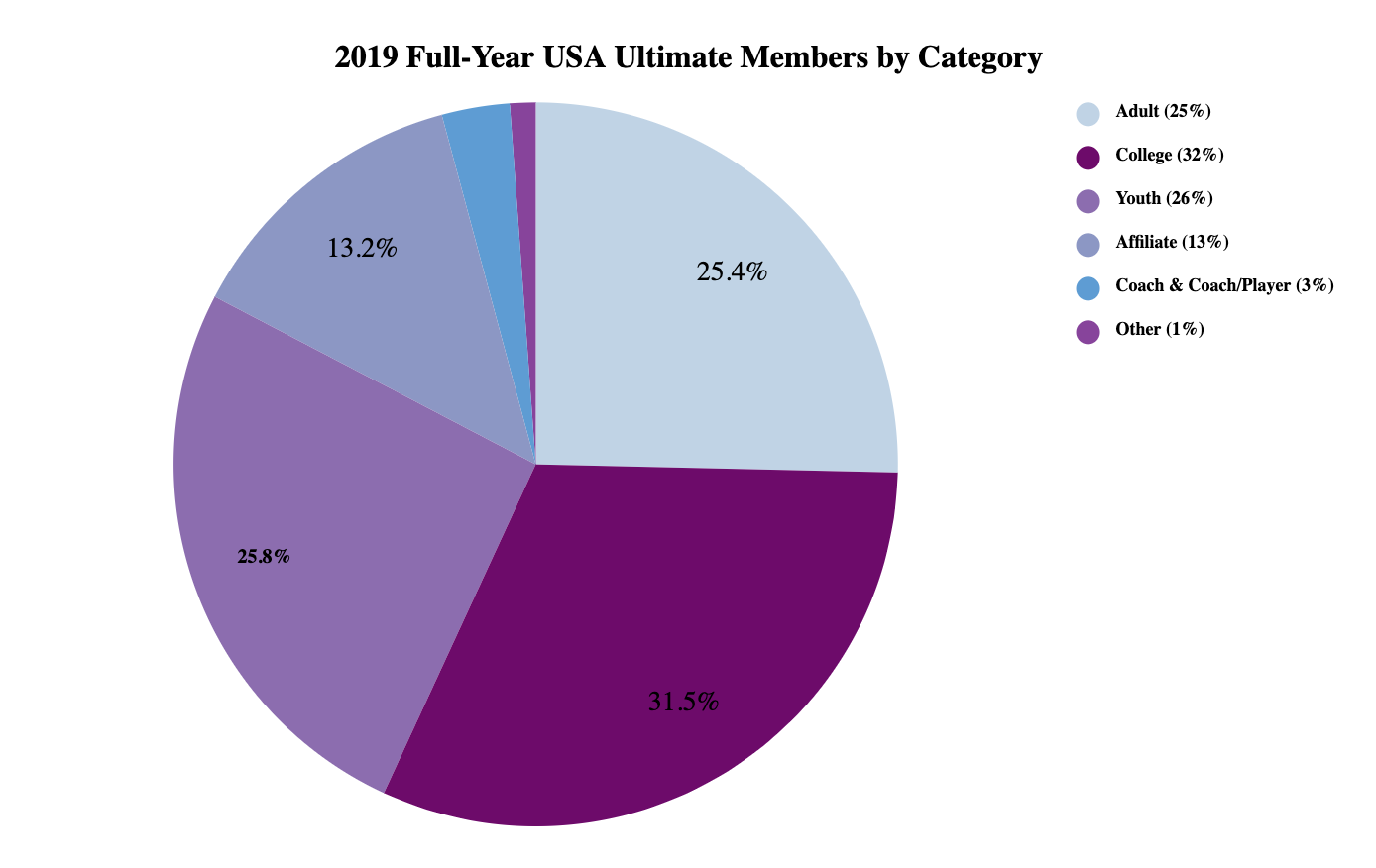
During COVID-19, I have spent a previously unimaginable amount of time thinking about the largest demographics in our membership (I’m using 2019 numbers for this, because I have really detailed breakdowns in front of me): college and youth players. I put a lot of faith in our youngest and largest demographics of membership. Why? Not only are they driving progress in our sport on and off the field, my perception is that they care more about seeing a strategic plan that is more representative of who they see off the field and who they want to see on the field too.
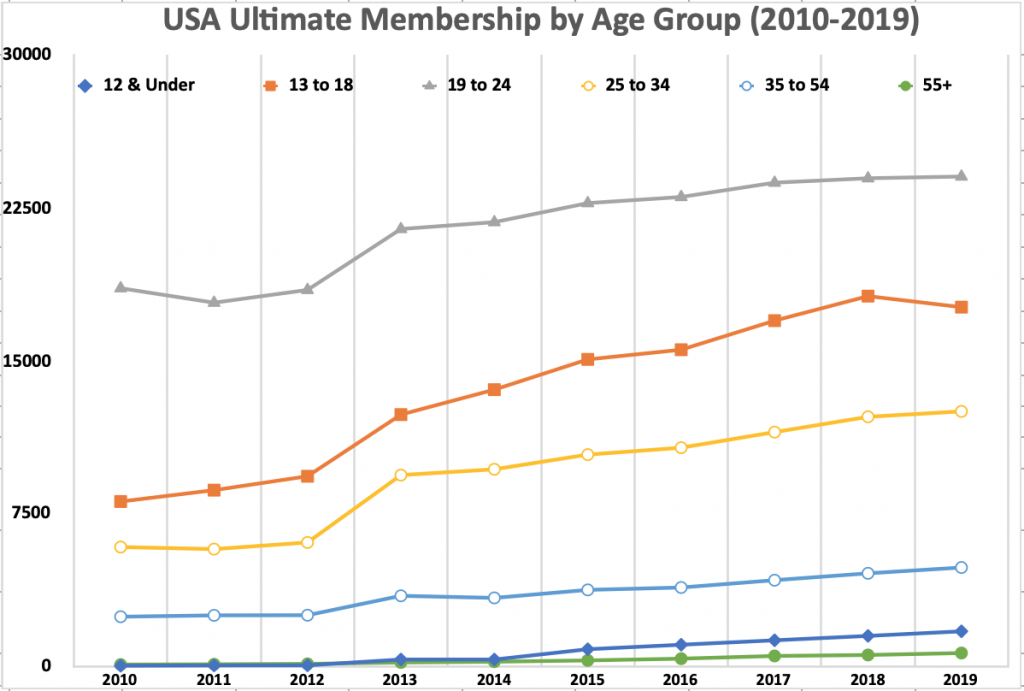 It wasn’t that long ago that I was part of that demographic. I came to ultimate from fastpitch softball at UW-Eau Claire. Ultimate attracted me because it was equal parts exciting and “different” than other sports I played. As it turns out, the more I learn, the more I’m realizing that what I learned as “spirited” is actually saturated in white supremacy and hetero-normative gender stereotypes,8 and I have a lot of thinking and changing to do. In fact, it’s the athletes I have coached in the college and youth divisions that have challenged me to grow the most.
It wasn’t that long ago that I was part of that demographic. I came to ultimate from fastpitch softball at UW-Eau Claire. Ultimate attracted me because it was equal parts exciting and “different” than other sports I played. As it turns out, the more I learn, the more I’m realizing that what I learned as “spirited” is actually saturated in white supremacy and hetero-normative gender stereotypes,8 and I have a lot of thinking and changing to do. In fact, it’s the athletes I have coached in the college and youth divisions that have challenged me to grow the most.
RELATED: Hear more from Robyn Fennig on Ultiworld’s Sideline Talk podcast
I feel angry when folks who controlled the “best” strategic plan we ever had keep pointing backwards and saying that the community had it right “back then,” and simultaneously tell me that the current plan document is flawed. In 2017, I participated in the strategic planning process as a member of the community, not a member of the Board. What is ironic is that this is the first plan I felt connected to. It was the first one I was invited to participate in (via online survey, because the Vision Tour only hit the “big hubs” of ultimate).9 It was the first time I explicitly saw that equity was a lens that all USAU programming would be viewed through – which gave me something to track and watch for. We as an organization have a LONG way to go, but we have it in the handbook. That means something. As someone who does planning for my career, once something is in a plan, it’s really hard to remove. It is, however, easier to build upon. I have hope.
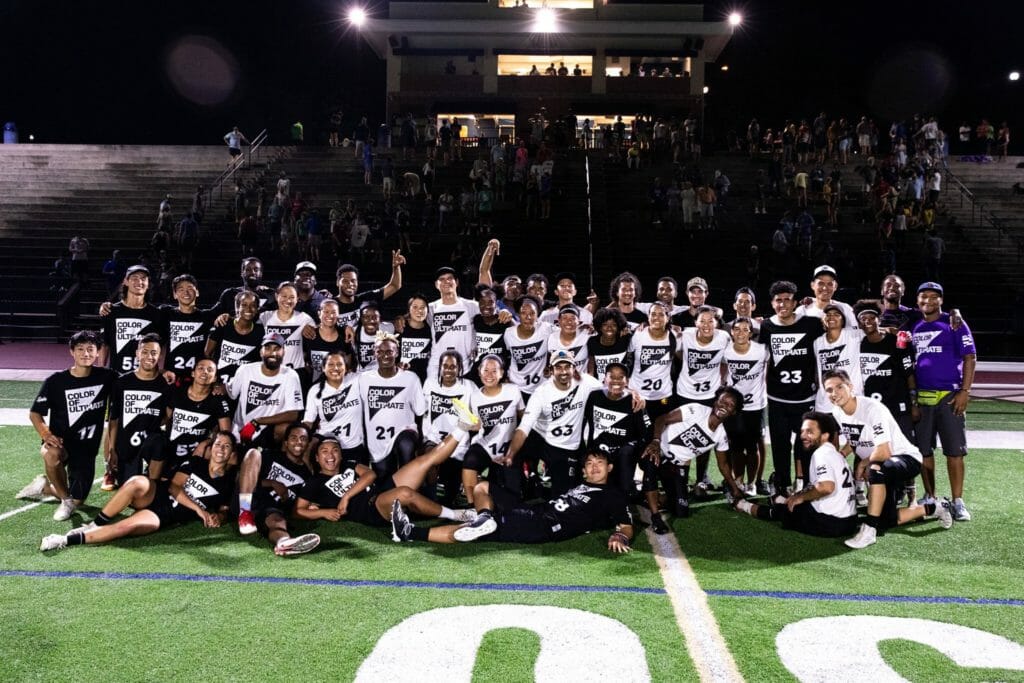
I also have an increasing awareness, just like my vision of SOTG, that this process was also driven by the predominantly white community and white board who brought it to fruition. I probably feel connected to this plan because white women tend to benefit the most by a plan that highlights “gender equity” as the main focus.10 I don’t recall the 2017 input process being very intersectional at all, not that I was aware of what intersectionality looked like in the first place in 2017. It’s on us as a community to keep building and pushing our growth as humans in ways beyond membership numbers. It’s not just about what’s in the plan, it’s about who is invited to the table in the first place. Whose voices we value or prioritize matter a lot in the planning process itself.
Going back to Mount Sportsland, if you want the expedition to be successful, think about the handbook. It literally orients the whole endeavor, not just the physical charting out of the journey, but also all the equipment, supplies, and food required for folks. It outlines what to pack, how to obtain supplies, and where to look for weather conditions. It also must be available in a variety of formats: hard copy, smartphone app, mobile friendly, braille, audiobook and in a variety of language translations. Plus, can everyone access the book in the first place? And honestly, without the book, the mountaineering guide doesn’t have a mission. It’s on the Board to put together a handbook that states what mountain we are climbing in the first place!
This USAU Board election, think about who you want on the Board when it comes to the next Strategic Plan. This document is the most important part of our identity as a National Governing Body. This 2020 group will likely be the cohort most present during the planning and outreach process and the actual writing of the plan. Who do you want at the table designing the stakeholder participation? Who do you want discussing who we should hire to physically write the plan?
Back to Mount Sportsland.
In my opinion, if we want to make a journey up Mount Sportsland, we need a diverse set of voices and experiences to write the trailbook.
- We need people who aren’t focused on the past, because they might miss where our membership wants to go.
- Just because one group summited Mount Sportsland in 15 days, it doesn’t mean that every group wants to do that.
- Planning a new book certainly doesn’t require that everyone on the Board actually summit the mountain themselves either. I would personally prioritize that my Mount Sportsland Board will have an EMT familiar with first aid rescue and medical care, and an expert in access and functional needs. If they have climbing experience, that’s a bonus, but I want to make sure that we have people thinking of all aspects of the journey, not just the best or most experienced climbers. Sure, having experienced climbers is important, but having folks who can think outside the box from their fields of expertise is also valuable too.
- A board that is filled with only experienced climbers or those who have climbed the mountain before might develop a plan that doesn’t actually allow everyone to get up the mountain or leaves people behind for the sake of speed. It might leave out the folks who want to hike, snowshoe, or go up on horseback. It’s not just that the journey will be more rough — it’s that for some it won’t be a journey they can access at all.
This year, many of our at-large candidates are extremely qualified, talented, and represent a variety of skills and experiences. As you cast your vote, think about the challenges we as a sport are faced with in 2020, some of which are being raised to our attention from outside of the organization.11
Think about the folks you want at the table and the types of issues they care about. Think about how they will represent your needs and goals, but also the needs and goals of others for that ascent up Mount Sportsland.
You can read more about Robyn Fennig’s candidacy on USA Ultimate’s website.
As any of my teammates or athletes I coach know, I’m a sucker for a metaphor. I use them liberally and unapologetically. Just like content footnotes in a written piece. ↩
This is a direct reference to Kyle Weisbrod’s Intro from his piece “From UPA to USAU” on Ultiworld. Weisbrod writes, “While the Ultimate Players Association/USA Ultimate has never been an organization that was widely acclaimed for its communication and transparency by its membership, by my estimation, 2007 was a high water mark in the organization’s favorability.” ↩
The exclamation point was used in equal parts irony and sincerity. I think it captures my enthusiasm for knowledge and growth in 2006. ↩
Huge shout out to Zips Tips and The Huddle for being like the only online resources out there. Even bigger thank you to Jaime Glader, Nicole (Heiman) Rizzo, and Katelyn (Mater) Peter for loaning me all the resources and answering my millions of questions. ↩
Guess, what? There was only one national championship back then, and it only had 16 teams in the Open and Women’s divisions, whose growth and strength bids were allocated on the previous year’s numbers. Most of us were not going to College Nationals. 5% assumes that of the 32 teams, each had 20 players. ↩
The .edu requirement was a thing until early 2006. Business and organization Facebook pages launched after the outreach for the 2007 strategic plan. ↩
The 2.6% came from assuming 16 Open + 16 Women’s teams with 20 players each (640 players) divided by full-time membership numbers in 2006, when the Strategic Planning process was happening. I know that an assumption of 20 players is awfully favorable, because most of the college teams in both divisions in my region had less than that, especially in the women’s division. ↩
See Chris Lehmann’s piece “On Ultimate and Race: SOTG” and Shylynn Rodrigues’ “Wearing a Mask: The Experience for Players of Color in Ultimate” and the documentary about the Color of Ultimate: ATL, among countless other stories and experiences. I also want to acknowledge and thank the 2018 Dartmouth Womxn’s team for a very thoughtful discussion on SOTG and gender expression I was able to be part of as my volunteer role with the SOTG Working Group at USAU. ↩
Driving to Minneapolis or Chicago during snow season after work on a weeknight seems unreasonable in the Upper Midwest, because it assumes that one has a vehicle to get there, and that it’s safe to do so even if you do. ↩
White folks often argue to focus on “gender first,” which is a common way that white women have co-opted the feminism movements in and outside of the world of sport. It wasn’t until I was exposed to some of Kimberle Crenshaw’s work in a course about “Transforming White Privilege” with Dom Maderal that I learned this. If this is a new concept to you, or even if you’re familiar with it, I urge you to read Layne Scherer’s essay “The Ultimate Gatekeepers: The gates of ultimate are white, and the keepers are men” and pay attention to her footnotes and sources. ↩
I suggest you take the time to engage with Time for the Ultimate Talk and read Layne Scherer’s other essay “Check Feet: ultimate’s loose policy foundation.” ↩